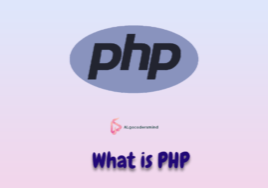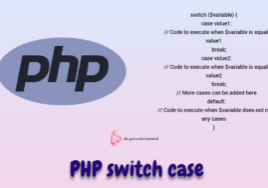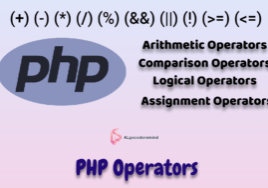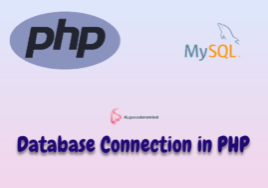PHP Data Types – A Comprehensive Guide with Code Examples
In PHP, data types are fundamental elements used to define and manipulate different types of data. Understanding data types is crucial for writing efficient and error-free PHP code. This article will provide you with a comprehensive overview of PHP data types, explain their significance, and provide code examples to illustrate their usage.
Table of Contents
Introduction to PHP Data Types
In PHP, data types are used to categorize and represent different kinds of values. They define how the values can be stored, manipulated, and interpreted within a PHP script. PHP supports several data types, including scalar, composite, and special types.
Scalar Data Types
Scalar data types represent single values. In PHP, the following scalar data types are available:
Integer
The integer data type represents whole numbers without decimal points. It can be both positive and negative. For example:
$age = 25;Float
The float data type, also known as a floating-point number, represents numbers with decimal points. For example:
$price = 10.99;String
The string data type represents a sequence of characters. It can be enclosed in single or double quotes. For example:
$name = "John Doe";Boolean
The boolean data type represents two possible values: true or false. It is commonly used in conditional statements and logical operations. For example:
$isReady = true;Composite Data Types
Composite data types are used to store collections of values. In PHP, the two main composite data types are arrays and objects.
Array
An array is an ordered collection of elements, where each element can be of any data type. It is denoted by square brackets and can be indexed or associative. For example:
$fruits = ["apple", "banana", "orange"];Object
An object is an instance of a class and represents a collection of related data and behaviors. It is created using the new keyword. For example:
class Person {
public $name;
public $age;
}
$person = new Person();
$person->name = "John";
$person->age = 25;Special Data Types
PHP also provides special data types to handle specific scenarios.
NULL
The NULL data type represents a variable with no value assigned to it. It is often used to indicate the absence of a value. For example:
$address = null;Resource
The resource data type represents external resources such as database connections or file handles. It is used to manage these resources within a PHP script. For example:
$file = fopen("example.txt", "r");Type Casting and Conversion
In PHP, you can convert a value from one data type to another using type casting. PHP provides various functions for type casting, such as intval(), floatval(), and strval(). For example:
$age = "25";
$ageInt = intval($age);Conclusion
Understanding PHP data types is essential for writing effective and reliable code. By knowing the different data types available in PHP and their usage, you can handle data more efficiently and avoid potential errors. Remember to choose the appropriate data type based on the requirements of your code.
Frequently Asked Questions (FAQs)
Q1: Can I change the data type of a variable in PHP?
Yes, you can change the data type of a variable using type casting functions provided by PHP.
Q2: How can I check the data type of a variable in PHP?
You can use the gettype() function to determine the data type of a variable.
Q3: Are there any other scalar data types in PHP?
In addition to integer, float, string, and boolean, PHP also provides the double data type, which is an alias for float.
Q4: Can I create my own data types in PHP?
Yes, you can create your own data types using classes and objects in PHP.
Q5: Are data types case-sensitive in PHP?
No, data types in PHP are not case-sensitive. For example, integer and INTEGER are treated as the same data type.
In this article, we covered the basics of PHP data types, including scalar, composite, and special types. We explored their definitions, provided code examples to illustrate their usage, and discussed type casting and conversion. By understanding PHP data types, you will be able to write more efficient and robust PHP code. Start implementing these concepts in your PHP projects and enhance your programming skills.
Our Recommendation
- Session and Cookies in PHP: A comprehensive guide
- PHP Data Types – A Comprehensive Guide with Code Examples
- PHP Switch Case: Structure for Efficient Code Execution
- PHP Operators with Code Example: A Comprehensive Guide
- PHP Variable Scope: Mastering the Fundamentals for Efficient Code
- Implode and Explode in PHP tutorial
- PHP String Functions: Enhancing String Manipulation tutorial
- Exploring Array in PHP: A Comprehensive Guide
- Oops Concepts in PHP: A Guide with Code Examples
- Ternary Operator in PHP: Examples and Best Practices
- Pagination in PHP and MySql: Simplify Your Data Display and Navigation
- Secure and Simple: Forgot Password in PHP
- Login in PHP Secure & Reliable
- CRUD Operation in PHP: A comprehensive guide
- Inheritance in PHP: A comprehensive guide
Akhand Pratap Singh
Related Post
Newsletter
Recent Posts
- How to Upload Image into Database Using PHP
- Inheritance in PHP: A comprehensive guide
- Image Resize in Laravel 10 : A comprehensive Guide
- Laravel Passport: A comprehensive guide in Laravel 10
- Laravel JWT Tutorial: A comprehensive guide
- Import and Export Excel in Laravel: A Step-by-Step Guide
- Rest API in PHP: Building Powerful and Scalable Web Services
- Array to String in PHP – A Comprehensive Guide
- Event Loop in JavaScript: A comprehensive guide
- Ternary Operator in JavaScript: A Comprehensive Guide










